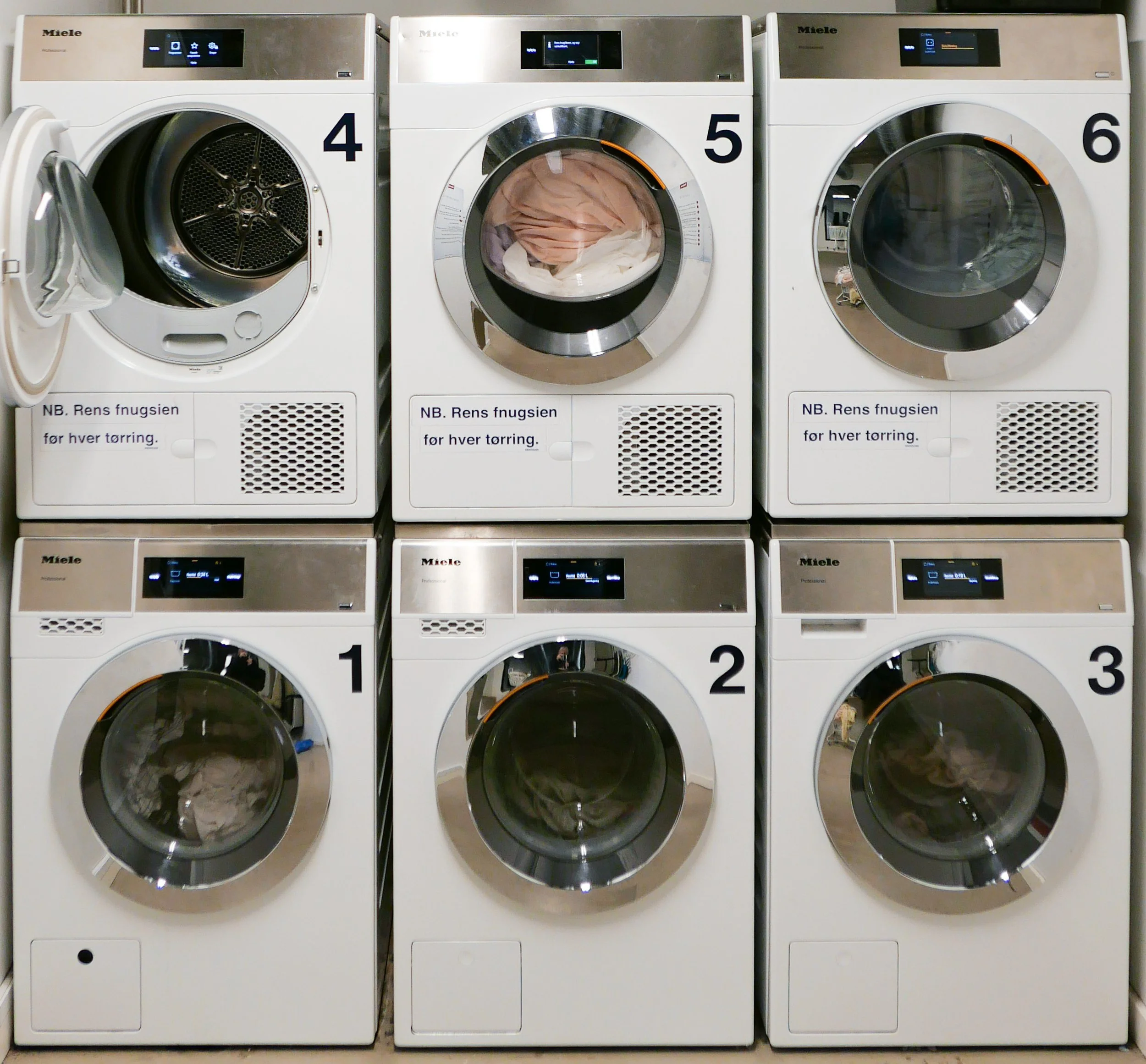sustainability through sharing
/One way to reverse our over consumption of products and our excessive demand on world resources is to share - rather than own - expensive equipment and particularly if that means we invest in more robust commercial-quality equipment that lasts longer before it has to be replaced. It’s the relatively rapid churn of buying and replacing and dumping that is so greedy on materials.
It could mean that families or buildings share equipment like electric drills or lawn mowers that spend much of their life in the shed or garage unused.
If you use a commercial launderette now then you already share washing machines but many of the launderettes in Copenhagen are long gone so there is certainly scope for more of us to share this expensive and material greedy ‘essential’.
In Copenhagen, in the early decades of the 20th century, the better apartment blocks in the city had communal laundries in a courtyard or in the basement of the building and, although most washing was dried down in the courtyards, some apartments even had drying rooms in the attic. Presumably they made use of the reality that, on sunny days, the space under the roof tiles can reach stiflingly hot temperatures.
Apparently, the first coin-operated laundry in Copenhagen was opened in 1950 but by 1970, at their peek, there were 400 launderettes in the city.
However, in that same period after the war, in the 1950s and 1960s, ordinary families could afford to buy washing machines, although many older buildings had limited space, with relatively small kitchens, or buildings with older pipework for water or narrow pipes for drainage that could not cope with the demands from washing machines so communal laundries survived or families continued to use local coin-operated laundries.
Now, most families living in modern apartments in the city expect to have their own washing machine. The most common arrangement here is to have a machine stacked up with a tumble drier in the corner of the bathroom.
The first apartments I rented in Copenhagen had their own washing machines and driers but, recently, I moved to a studio apartment where there is a communal laundry room.
Initially I was concerned ... I felt I could do without the hassle of having to book a machine and go down to load it and then back later to unload. What a skewed sense of inconvenience we have in the so-called first world.
In the laundry here, there are three washing machines with three tumble driers and as there are 138 apartments in the building, simple maths suggests that means saving the cost and the materials for 135 washers and 135 driers. Some of the studios are occupied by couples so the laundry serves 170 people or more.
Machines are booked through an app and as the laundry is open from 6am through to midnight - with nine time slots of two hours for each machine - and, as they are in constant use, they each do around 63 washes a week. You have to think a day ahead but that is a small price to pay. If you look on the app then all slots today have been booked but tomorrow almost any time is available.
The machines dispense washing liquid and fabric softener so there is also a sustainability gain there as they come in containers of 25 litres that are returned for refilling so no plastic waste and presumably a reduction in the CO2 impact from more efficient transport costs .... at the very least I appreciate not having to lug washing liquid from the supermarket.
But an expansion of a sharing culture will requires a major rethink on the part of manufacturers and a change of attitude from consumers.
Thinking about washing machines, it seems strange to be able to look back to key stages of my life as marked by the evolution of washing-machine design. My grandmother had a splendid and ever steaming "copper" in the corner of her kitchen that bubbled and boiled away with tablets of bright blue crumbled in for brilliant-white sheets and table clothes.
The boiler was plumbed in - in that it had a brass tap on the wall above for filling it with water and a plug at the bottom so dirty water emptied out into a drain - but wooden tongs were used to transfer dripping washing into a small metal drum - a spin drier on wheels - that was waltzed into the kitchen from the garden shed for the last stage of the wash.
My mother was much more up to date and we had a "twin-tub" so a heavy tangle of "soggy wet" washing was dragged from one half to the other to be spun.
Then we got a Hoover keymatic - when they first came out in the early 1960s - and it was a brute of a machine with a sloping front that stuck out into the kitchen. It was programmed using a thick plastic beer mat with a notched edge that was twisted around or flipped over and dropped into a slot in the top for different combinations of temperatures and options for spinning. The machine was loaded down with concrete in the base but with the spin dry, if badly loaded, it marched it's way across the kitchen floor until held back, though only just, by the hoses at full stretch. I gave it the respect it deserved and always gave it a wide berth.








































